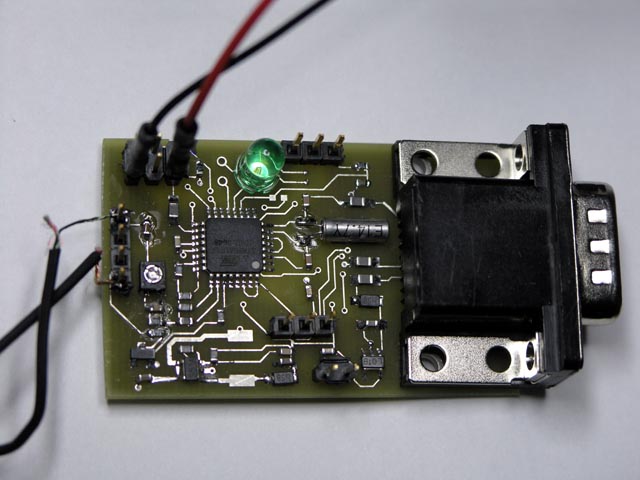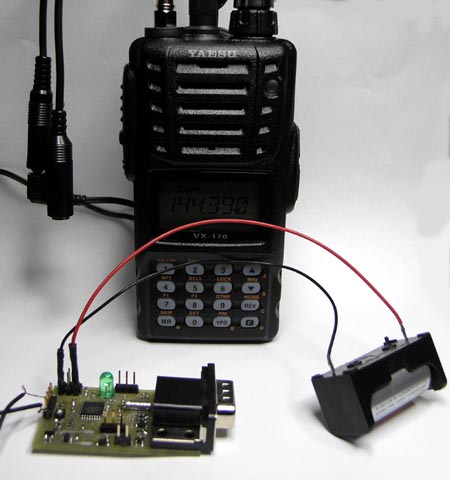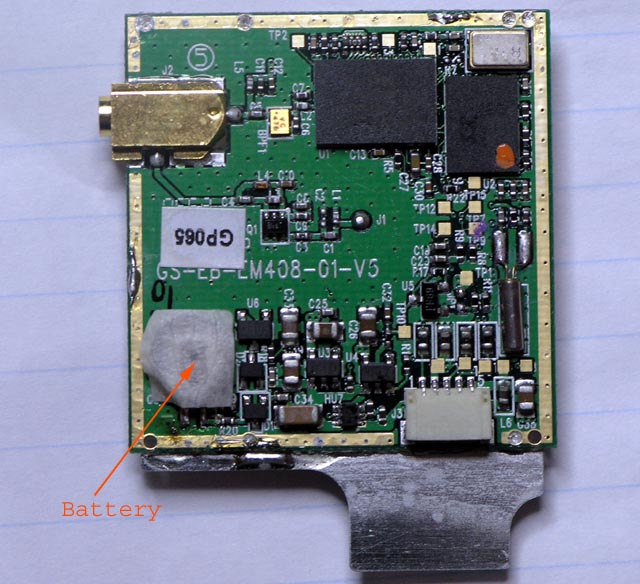
| TRKAVR GPS-APRS |
||
| TRKAVR V2.0 |
||
ATMEGA324 based APRS tracker board. Interfaces to NMEA GPS source (SirfIII boards work great). Dual purpose output - can be wired to a single PTT/Audio input like on the Yaesu VX-170 or can be connected to a rig like the Yaesu FT-1802 that uses separate PTT and audio input pins. The picture is of the V2.0 prototype. |
||
V2.0 prototype powered off an R123 (3.7V lithium-ion cell). Connected to a VX-170 using the CT-91 cable (splitter). Building on the experience gathered from the V1.0 prototype, the new V2.0 inherited the resistor ladder tone generator and base firmware. V2.0 sports an onboard boost converter to provide 5V to the uController core and circuitry. An LDO is used to provide regulated 3.3V for the Sirf GPS engine from the 5V. V2.0 also has a built in li-ion charger that can be driver directly via a PC's USB port or via one of the many USB power ports that run from AC adapters or lighter outlets found in vehicles. |
||
 |
ATMEGA168 based APRS tracker board. Interfaces to NMEA GPS source (SirfIII boards work great). Dual purpose output - can be wired to a single PTT/Audio input like on the Yaesu VX-170 or can be connected to a rig like the Yaesu FT-1802 that uses separate PTT and audio input pins. The picture is of the V1.0 prototype. |
|
 |
V1.0 prototype powered off a CR123 (3V lithium). Connected to a VX-170 using the CT-91 cable (splitter). The first test were performed using hardwired MIC-E formatted packets to get the software generated 1200Hz/2200Hz tone up and running. Also, creating the MIC-E packets required some 'digging' and some help from Hams with some MIC-E experience. The APRS spec leaves a bit to be desired when it comes to accurately describing the protocol, CRC16 generation and in particular some of the details of the MIC-E protocol. There was also some issues with how to handle the digipeater paths.
|
 |
From experience I've found the SirfIII based GPS modules offer amazing performance for the money. Here is one with the metal cover temporarily removed to allow an inquisitive EE to peak under the bonnet :) You can see the onboard battery (under the insulating tape that prevents the battery shorting to the metal cover). The battery provides storage for the almanac and allows fast re-acquisition of satellites when external power is removed temporarily. |